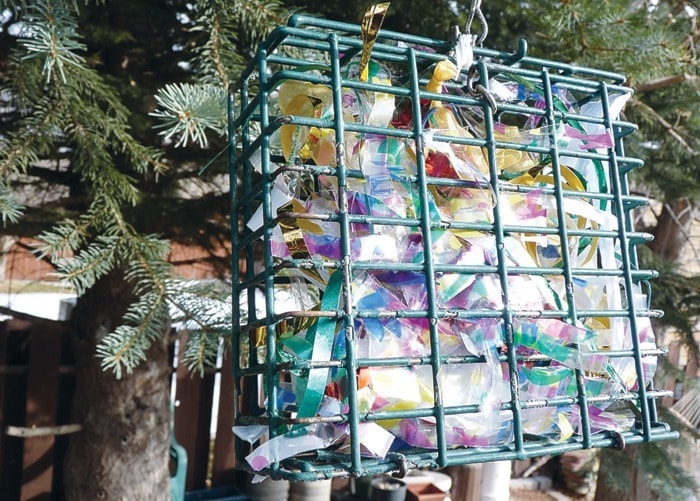With each passing day, the outdoor airwaves fill with ever-increasing levels of birdsong as our avian friends commence another breeding season.
In early spring, American robins and other backyard birds are far more interested in hauling beaks-full of dried grass than juicy worms.
Most songbirds build a new nest every season, using it solely to lay and incubate eggs, and raise young. Once the last fledgling leaves the nest, it is often abandoned, but birds may re-use bits and pieces for new nests. Eagles, however, refurbish their nests every year, resulting in some heavy, deep twig structures. One such nest, at 36-years old, weighed two tons.
Most songbird nests resemble rounded cups or bowls, with twigs, grass, leaves or other coarse vegetation chosen for the outer layer (dry grass is in high demand come springtime, so for the health of the birds, avoid lawn chemicals). Softer materials like feathers and moss will line the cavity interior for insulation and cushioning, and silky, sticky, stretchy spider webbing is often the glue holding everything together.
Providing an assortment of bird-friendly material is a simple way to encourage backyard nest-building and involve the whole family in a fun nature activity.
Once, I watched spellbound as a neighbour ran about her yard tossing feathers from an old pillow, and lo and behold, a bumper crop of songbirds chose her trees and shrubs for nest construction.
Wire suet holders or open-top plastic berry baskets make ideal containers to stuff with soft material like dog fur, horse hair, wood shavings, string, yarn, ribbon, cottonwood fluff or cattail down.
Birds’ sense of sight is highly acute, and they’re drawn to bright colours. Try cutting bright fabric scraps into one-inch strips. Cut everything into 4-inch lengths to prevent entanglement, and nix dryer-lint, which hardens like cement.
An abundance of trees and shrubs will provide birds with safe nest sites, hidden from view. Simple nesting ledges made of scrap wood may attract robins, swallows and rock doves. Remember to fill an old garbage pail lid with mud which the birds use like cement.
It’s springtime, so let the little ones run riot and deck the yard with ribbons and yarn. The ultimate reward will be seeing how avian ingenuity includes man-made material when fallen leaves reveal secret nesting sites come autumn.
E-mail Christine: wildernesswest@shaw.ca.
